Mulching is an essential gardening task that helps to retain moisture, prevent weed growth, and improve soil quality. While mulching can be done at any time, it is best to mulch after rain. This is because the moisture from the rain will penetrate through to the soil and then can be kept in by the mulch. Mulching after rain also helps to prevent soil erosion and reduces the need for frequent watering.
In this article, we will provide step-by-step instructions on how to lay mulch after rain for the best results.

8 Reasons to mulch after rain
Check out the top 8 reasons to mulch after rain.
- The soil is already moist, so the mulch will help to retain the moisture and prevent it from evaporating.
- The rain will penetrate the soil better helping it to reach plant roots.
- Mulching after rain can help to prevent weeds from sprouting, as the rain will have already germinated any weed seeds in the soil.
- The rain helps to distribute nutrients in the soil, and mulching after rain can help to lock those nutrients in place.
- Mulching after rain can help to regulate soil temperature, as the moisture in the soil will moderate any temperature fluctuations.
- Mulching after rain can help to prevent soil erosion and nutrient runoff, as the mulch will help to absorb the rain and slow down the flow of water.
- Mulching after rain can help to reduce the amount of watering required, as the mulch will retain moisture and reduce evaporation.
- Mulching after rain can help to improve soil structure, as the moisture from the rain will help to bind soil particles together.

How to mulch after rain – Simple steps
The key mulching after rain is to lay the mulch 2- 3 inches or 5-7cm thick. If you lay mulch too thick, it can absorb the rain water and it will evaporate before reaching the plant. Check out my easy steps to lay mulch after rain.
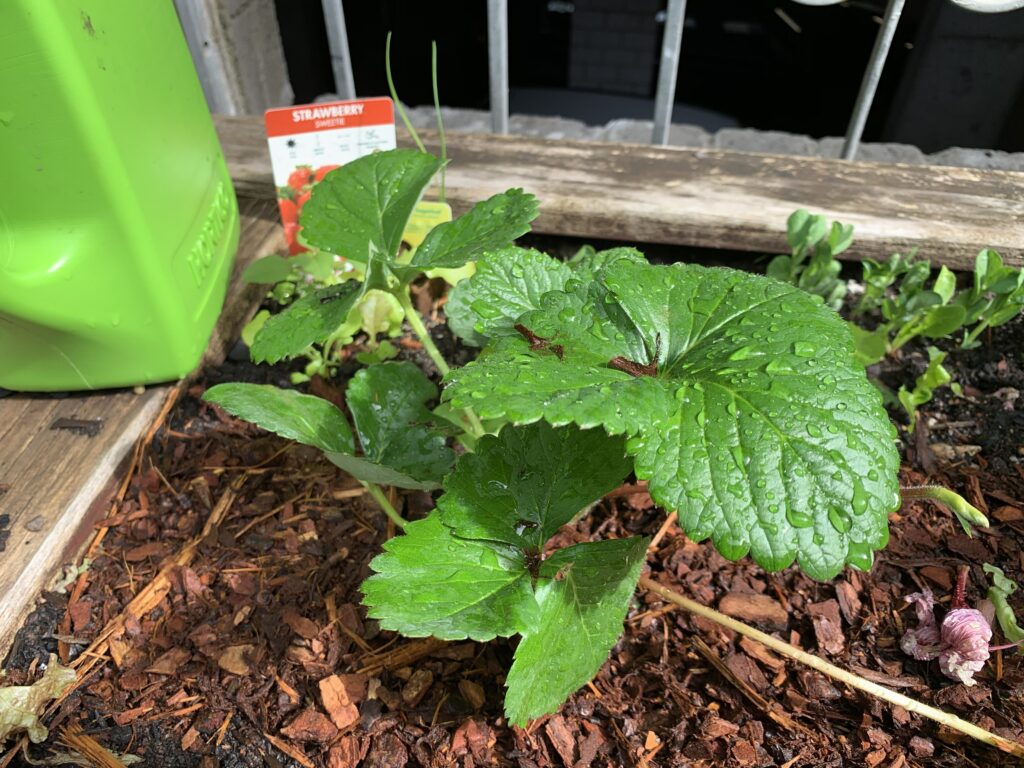
- Wait for the rain to stop and the soil to dry slightly. This is important to prevent compacting the soil when you walk on it.
- Remove any weeds, rocks, or debris from the soil surface.
- Calculate how much mulch you need. A general rule of thumb is to use 2-3 inches of mulch over the soil surface.
- Choose the right type of mulch for your plants and soil. The best mulch will depend on what you are planting. This could be shredded bark, wood chips, straw, rocks or compost.
- Spread the mulch evenly over the soil surface using a rake or garden fork.
- Keep the mulch at least 2 inches away from the plant stems to prevent rot and fungal growth.
- Water the mulch lightly to settle it in place and prevent it from blowing away.
- Check the mulch depth after a few days and add more if needed.
- Monitor your plants regularly to ensure they are thriving and adjust the mulch thickness if necessary.
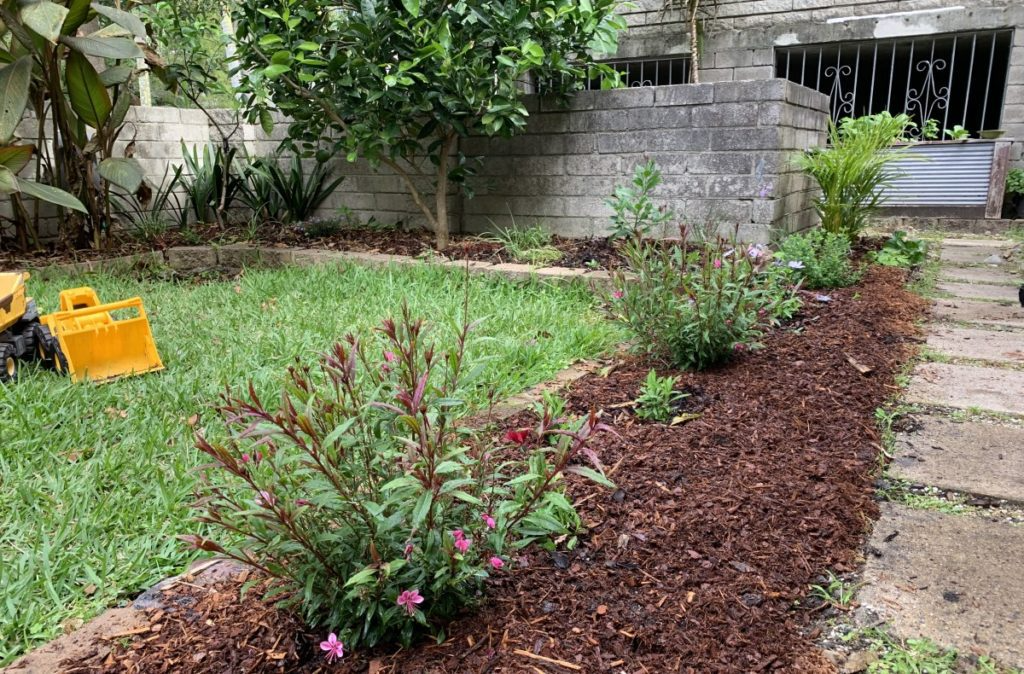
To lay mulch after rain follow these easy tips:
- Try not to step inside your garden beds so you don’t compact the soil.
- Wear old clothes – wet mulch will stick to your clothes and can be harder to clean than dry mulch.
- Use a mulch shovel – Mulch shovels are light which will balance out the weight of the mulch. They are the easiest way to move large amounts of light mulch.
- Don’t fill your shovel too full and only lift what you feel comfortable with
Mulch gets heavy when it is wet and if the ground is wet then it can become compacted if you step on it to spread the mulch. If you can, let your mulch dry before spreading it. It will make the job easier.
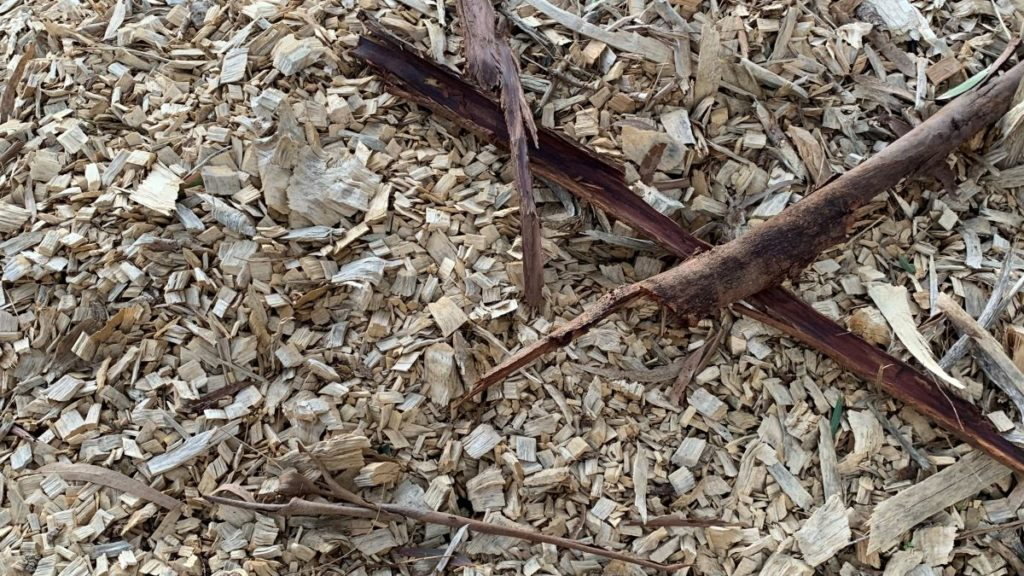
The best time to mulch
Here is a guide to the best time to mulch each plant type and the best type of mulch to use.
| Plant type | Plant Types | Mulch Type | When to Mulch |
| Newly Planted Trees | Citrus, palms, camelias, roses, azaleas, tibouchina, | Bark mulch | Straight after planting and top up each year |
| Annual Flowers | Petunias, pansy, violas, dianthus, | Bark mulch or sugar cane mulch | Straight after planting |
| Flower seeds | Sweet pea, viola | Bark mulch or sugar cane mulch | When seedlings are 1-2 inches |
| Vegetable garden | Strawberries, broccoli, peas, beans. | Sugar cane mulch, straw or lucerne mulch | When plants are 1-2 inches |
| Vegetable seeds | Bok choy, lettuce mix, chives | sugar cane mulch, straw or lucerne mulch | When 1-2 inches in size, keep mulch away from stems |
| Herbs | Rosemary, Thyme, mint, marjoram, oregano, | Sugar cane mulch or lucerne mulch | When plants are at least 3 inches |
What to do before mulching garden beds
Before mulching your garden beds prepare the soil with organic matter. After you add mulch to the top of your garden beds, it is more difficult to add goodness like compost and fertilizer so it is best to do this first. I always like to think about caring for the soil as much as the plants so doing this before you mulch is easiest.
Mulching a new garden bed
If you are mulching a new garden bed first dig the soil over, remove weeds and add aged cow manure, compost and sprinkle some pelletized chicken manure. This is great for vegetable gardens, flowers and trees. This will provide long lasting nutrients as it breaks down in the soil.

Mulching under established trees
If you are mulching under established trees, then sprinkle a handful of pelletized chicken manure, particularly for citrus. Then you can lay the mulch over the top. Be careful not to dig or disturb the soil under the citrus trees as they have shallow roots which can be damaged.
Large trees will benefit from a layer of bark mulch around their root zone. Make sure you keep the mulch at least 3-4 inches away from the trunk to prevent water from being trapped and causing rot.
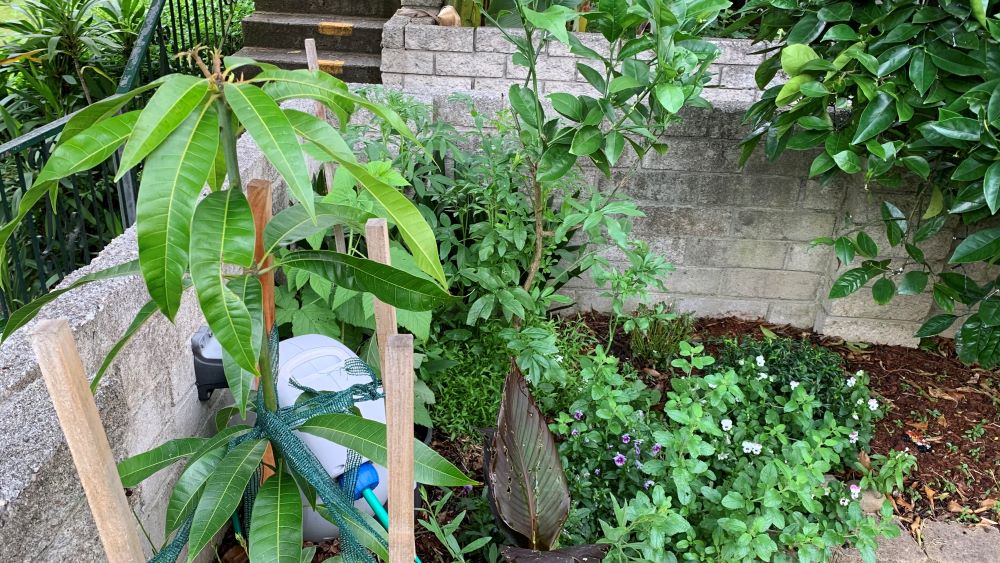
Does rain ruin mulch?
Rain does not ruin mulch but will make it wet, heavy and sticky. This can make it more difficult to move by hand and can cover your clothes in mulch. Mulch make from natural materials like sugar cane, bark mulch, tree mulch or hay will naturally dry over time but it is best to cover it with a tarp or keep it under a shelter until you are ready to lay it on the soil.
Rain does not ruin mulch but does make it heavier. One of the benefits of damp mulch is that it won’t be blow around your yard or make any dust as you spread it. All mulch breaks down over time and rain will speed up this process. Any mulch is great, wet or dry.
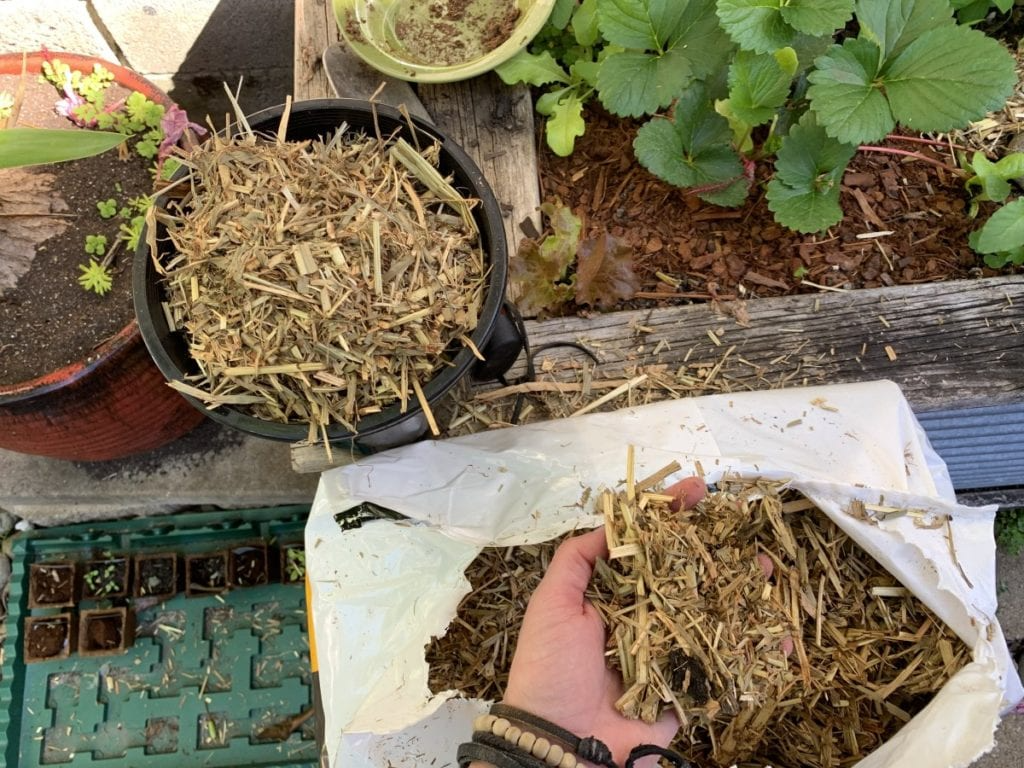
What types of mulch are best for my garden beds?
The best types of mulch for vegetable garden beds are sugar cane mulch, straw or lucerne. Lucerne will have the most nutrients as it holds the most nitrogen. These types of mulch will break down quickly so will need to be replaced every 3 months. They add lots of carbon to your vegetable garden and can be easily dug in when the growing season is over.

After planting vegetable seedlings, surround them with a 2-3 inch layer of a light straw mulch. This will protect their root and keep soil moisture in.
Use a mixed bark mulch for flower beds and trees. It contains both larger bark pieces and smaller leaves and stems from mulching whole branches. These are usually made from tree trimmings by local arborists. They make a great mix of green and brown materials and keep the soil moisture in.
You can also use sugar cane mulch or lucerne however this will break down quickly and need to be replaced every 2-3 months.

Bark mulch is a perfect mulch to use as a path or next to your garden path. It is great to walk on and will help your soil to keep healthy and stay moist. If you choose to move your path, the soil underneath will be better for having the mulch on top.
Should you remove mulch every year?
Don’t remove mulch from your garden beds every year. Mulch will break down slowly over time so you will need to top it up in your garden beds, under trees and around shrubs. In your vegetable garden, when you use sugar cane or straw mulch, this can be dug into the garden bed at the end of the growing season. Replace this with new mulch when you plant out your seedlings in spring or fall.
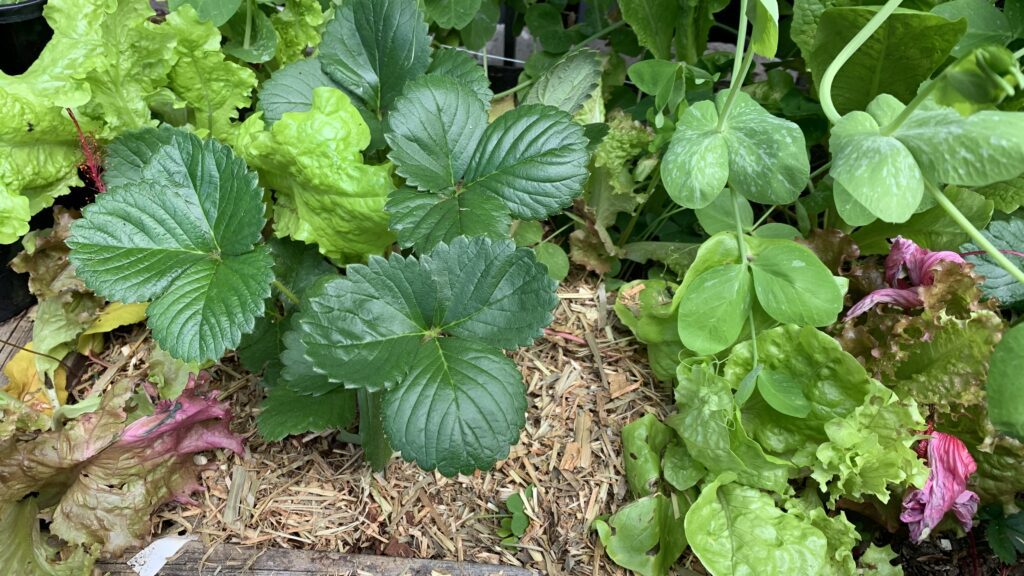
Should I mulch my vegetable garden?
You should add lighter mulches like sugar cane, straw or lucerne mulch around your vegetables. Seedlings like broccoli, cabbage and strawberries will benefit from mulch which will help to keep the weeds down and the water and rain in.
I would not mulch over vegetable seeds like lettuce seeds, bok choy or pak choy. If you cover the seeds with mulch, it will be more difficult for the seed sprout through the mulch. Once the seeds have grown to 2 inches, you can add some mulch around the seedlings.
Should I mulch citrus trees?
You should mulch around your citrus trees. I like to use a bark chips but you could use straw or lucerne. You will just need add this mulch more often as straw or lucerne will break down quicker.

Adding a bark mulch under your citrus trees will help to keep in moisture, encourage worms to live near your citrus and improve the soil. Just make sure you don’t put the mulch right up against the trunk as this may encourage rot.
The best places to get mulch
The best place to get mulch is from your local municipality. Check on their website as most will be trimming public trees and shrubs and turning it into mulch for public gardens. Many municipalities will sell this to the public for a very good price.
Another great place to get mulch is from a local landscape supplier. You can ring and get them to deliver this to your house or pick it up yourself. Mulch is reasonably priced, and a good tree much will be quite affordable.
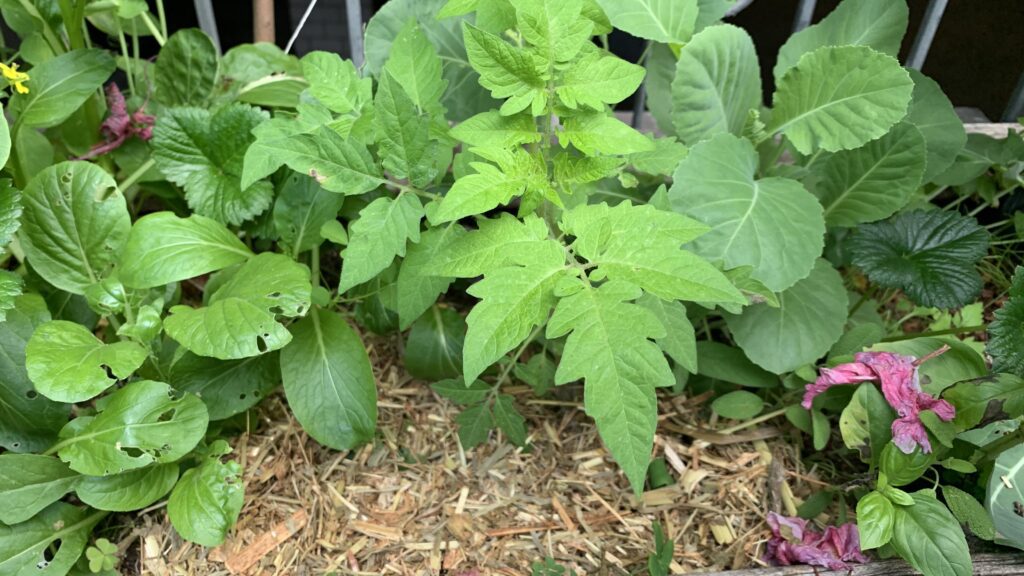
The other option is to buy mulch in bags from your local hardware store or garden center. We only have a tiny backyard so I have been buying mulch in bags. I also have to carry everything up a flight of stairs so this makes it easier to bring in mulch to my yard.
Depending on the area you need to mulch, you can decide whether you need a trailer load, a truck load or even just 1 or 2 bags.
Mulch before or after rain – FAQ
How long should mulch be down before rain?
Mulch laid before rain as it will help to disperse the water across the soil. Mulching when you have time may be the best thing to do to protect your soil and complete the job. If rain is forecast within the next 24 hours, wait until it has finished and then lay the mulch on top.
What is the best time to put down mulch?
The best time to put down mulch is after heavy rain. This will allow the rain to fully penetrate the soil, water your plants and then keep the mulch dry. Wait until after heavy rain to get your mulch delivered as it can get heavy when it absorbs excess rain water. This makes it more difficult to move and it can stick on your clothes and tools.
What happens to mulch when it rains?
Mulch will absorb the rain and slowly release it into your soil. This works well to provide an even amount of water to your plants and reduce evaporation from the soil. Mulch will get heavy until it releases the water back into the soil. Keep the mulch 2-3 inches thick to find the perfect balance of reducing evaporation and letting rain water through to the soil.
Should you mulch after heavy rain?
You can mulch after heavy rain to keep the water in the soil for longer. This will give your plants more time to absorb the water before it evaporates. Mulching before heavy rain can also be a good approach as it can help to reduce soil run off. Try to keep your mulch dry before you lay it otherwise it will be heavy.
I am an accredited practicing dietitian, experienced gardener and a dedicated cook. I love writing and sharing my experience so you can learn from my successes and mistakes.

Comments are closed.